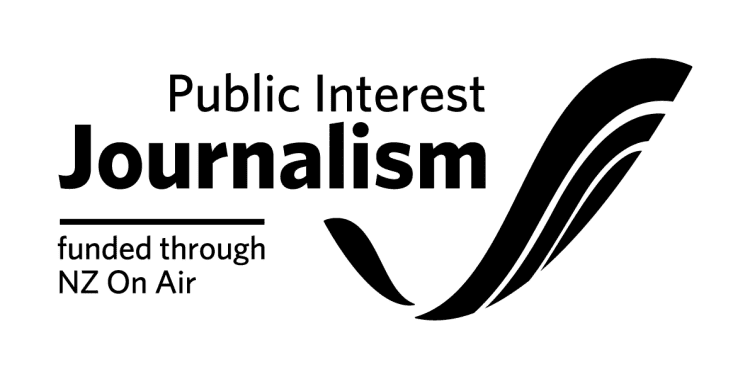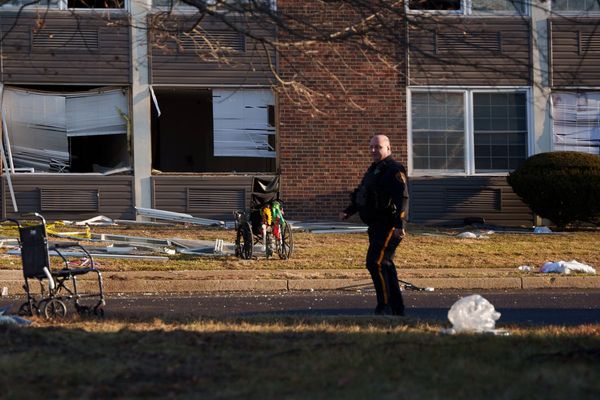
A new report based on data gathered over 20 years on more than 30,000 women reveals improvements, but also shows persistent disparities for Māori and Pasifika women. Aaron Smale reports.
Tarirai from Northland was diagnosed at 40 with an early stage of breast cancer, or DCIS (Ductal carcinoma in situ). The stress of the diagnosis was aggravated by the delays getting surgery.
“I was diagnosed with DCIS in the first week of February after finding a lump, and given a surgery date of 19 March. I was counting down every single day for my mastectomy, desperate to get this thing out of me. Then Covid happened and five days before my surgery, I was told all operations were cancelled. I didn’t cry when I found out I had breast cancer, but I broke down when they told me this. It ended up being delayed by a month and it was an agonising wait. Afterwards, I learnt they’d found invasive cancer. If I’d been delayed any longer, who knows what the outcome would have been?”
Tarirai survived. But many Māori women don’t.
Tarirai was part of a study just released that shows Māori women have lower survival rates for breast cancer than Pākehā women. And the numbers are worse for Pasifika women.
The Breast Cancer Foundation has just released a report, 30,000 Voices: Informing a Better Future for Breast Cancer in New Zealand, that is based on the foundation’s national register that has data on more than 30,000 women over 20 years.
There are approximately 3,500 breast cancer diagnoses each year and the latest Ministry of Health mortality report shows nearly 700 deaths in 2019.
The report shows disparities between different ethnicities on a number of measures, although these gaps are closing. But it also shows that all women are waiting longer for surgery for breast cancer.
The report found that Pasifika women and Wāhine Māori are more likely to die of breast cancer within 10 years of diagnosis, compared with Pākehā (European ancestry) and Asian women.
One breakdown of the statistics shows the 10-year survival rate of women who were diagnosed between 2009-11: 8 percent of Asian women, 13 percent of Pākeha, 16 percent of Māori, and 20 percent of Pasifika women did not survive. The numbers were worse in the previous period the study analysed.
Dr Reena Ramsaroop from Waitemata DHB says the data shows clearly that Māori and Pasifika women have worse outcomes.
“Because of the large numbers of European people that have breast cancer, we've taken them like a base baseline, and comparing other ethnicities to them. So we're looking at a Māori, Pacific, Asian woman as compared to European women.
"We've been looking at ethnic differences in breast cancer for a long time and consistently Māori and Pacific Islanders do worse over time."
“If you compare a Māori woman diagnosed now, or in 2011, or 2015, her prognosis is much, much better, as compared to 2002. So the outcomes are getting better. But when you compare across ethnicities, that's where the differences come in.”
Ali Coomber, who is Samoan, was diagnosed with breast cancer in 2021 at the age of 60 and is coming up to two years since her mastectomy.
"I had a mammogram and I was called back. And then they did a biopsy. And then the results of that came, and then they called me back. They notified me that I had breast cancer."
“When I initially went to have my mammogram they were taking quite a while and because I've had them a number of times before I thought, ‘this is a bit odd.’ My alarm slightly went off.”
“I kept it to myself at first, apart from my sister because it takes a while to absorb. People react differently. And then once I told a couple of people after a couple of weeks. My family were great, they're really supportive.”
“I flagged that to other members of the family, so they make sure that they go and have their mammograms. A lot of us were not aware of the statistics. A number of family members went and had mammograms after that.”
"I was lucky mine was caught at stage two. I have mammograms every two years. They told me it'd be a partial mastectomy and that I would have to have radiation. The Thursday before my surgery, which was the following Tuesday, I was told that it would have to be a full mastectomy. That put me back a bit. I was not expecting that. I just had to adjust the mindset around that. I was very fortunate because I didn't actually end up having radiotherapy. So I was I was one of the lucky ones."
Coomber says she only became aware of the disparities for Pacific and Māori women after her diagnosis and said there needs to be more understanding of the reasons.
“It's hard to pinpoint because is it an environmental thing or a nutritional thing. Are we not getting tested often enough? Pacific Islanders are a bit shy about going and having mammograms at times. Is it diet? Is it something in our genes that makes us highly susceptible to cancer? So, there's some investigation going on in a number of areas as to why are we so highly impacted."

Dr Ramsaroop says the data in the foundation's records has provided a valuable source of information that will help improve outcomes for women.
"For the first 10 years it was pretty much collecting data across the board. Now we're almost 20 years plus down the line and the data has matured and we can now use it to improve health in breast cancer."
Dr Ramsaroop says worse outcomes are due to a combination of factors.
“One of the major studies that was done in 2018 found that the late stage of diagnosis was one of the factors. So we come back to screening. The earlier you diagnose, the better your outcomes and it's been proven. It's been shown that Māori and Pacific Island patients have a later stage disease (when diagnosed), as well as the largest tumour size. Those factors may lead to a worse prognosis, or worse survival rate over time. The biology of the disease is also different. They tend to have some of the more aggressive tumours.”
Māori and Pacific women also wait longer to get surgery compared to Pākeha women. Over the years 2018-2020, 37.3 percent of Pākehā women got surgery within 31 days of diagnosis of invasive breast cancer and a total of 52 percent underwent surgery within 62 days.
For Māori women the rates were 33.5 percent received surgery within 31 days and 56.8 percent within 62 days.
However, in the 2015-17 period the rates for Pākehā women were 41 percent received surgery within 31 days, while for Māori women it was 32.5 percent.
Overall the rates that all women get surgery within 31 days has declined in the last 20 years. Dr Ramsaroop says this increase in waiting times is something researchers need to do more work to understand.
“I can't put a factor or reason why the wait times are getting worse. We did discuss it with surgeons and they are looking at it and hopefully they will come back with an answer. We have to dig deep down and find out why.”
Wāhine Māori and Pacific women were more likely to have higher-risk HER2-positive breast cancer than Pākehā women.
HER2 is a protein that make breast cancer cells grow quicker. These cancers tend to grow and spread faster than breast cancers that are HER2-negative, but are much more likely to respond to treatment with drugs that target the protein.
Pasifica women have the highest rates of life-threatening stage 3 and 4 breast cancer and of HER2-positive cancers, and more fast-growing grade 3 tumours than all other ethnicities.
Dr Ramsaroop says disparities along ethnic lines are common in other countries and seem to be related to socio-economic factors.
“It's access to treatment, it's deprivations, cost of living, it's all of those things where you put health second, third, fourth, fifth on the list rather than number one. You will see that in all of those countries as well, where it is in poorer areas.”
In Australia, the five-year survival for Aboriginal women with breast cancer is 81 percent compared to the general population of 92 percent.
Breast screening rates for Aboriginal women are also lower compared to non-Indigenous Australians, at 37.3 percent compared to 53.2 percent.
The free-to-attend Q&A from Breast Cancer Trials about Breast Cancer in Māori, Pasifika and Indigenous Communities will take place on July 26 2023 from 5.30-7pm at the Auckland Museum. A Q&A will be live-streamed as well and people can register to watch the livestream and pose a question to the expert panel.
The event is moderated by broadcaster Stacey Morrison and includes a panel of experts and cancer survivors who will present as well as answer questions from the attending audience and online audience.
The panel consists of Associate Professor of Medical Oncology, Andrew Redfern, Ali Coomber, Samoan breast cancer survivor, Andrea Casey, Aboriginal breast cancer survivor, Dr Reena Ramsaroop, Clinical Director of Surgical Pathology at Waitemata District Health Board and Dr Rob McNeill from the University of Auckland.
People can register to attend the event in person at this link: https://breast-cancer-trials-qa.eventbrite.com.au/
And for the live-streamed virtual event here: https://www.breastcancertrials.org.au/qa-events/breast-cancer-in-the-maori-pasifika-indigenous-communities/








